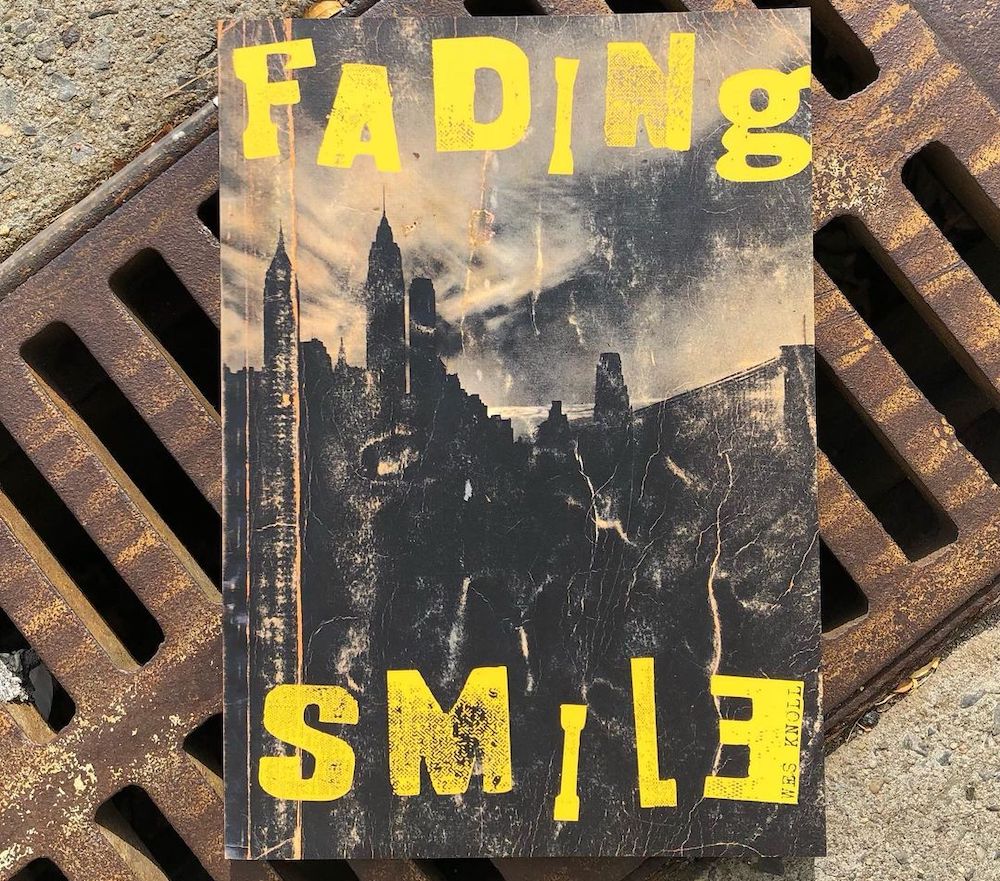Growing up in Yorkville during the early aughts, photographer Wes Knoll was crushingly bored by the homogenous scene on midtown Manhattan’s eastern shore. But once in high school, the world finally began to crack open. “I could have never imagined whether it just be like being able to hop on a train and be what feels like worlds away,” he says. New York’s exquisite blend of cultures and communities proved intoxicating for the young teen, who started writing in 2012 and took up photography the following year. “The last stop on the 1 train was a rendezvous point where we’d go tag or smoke, or we’d go out Red Hook or Park Slope, which were at one point foreign to me. I think I was drunk on exploring the myriad of people and places I was encountering,” says Knoll.

Self-portrait collage of the artist. Images taken in Murder Mountain, California, a tenement in Gare Du Nord (Paris, France) + Syracuse, New York. Legal documents and paperwork from arrests in Bozeman, Montana + Bar Harbor, Maine. | ©Wes Knoll
One day at school, he came across a copy of Raised by Wolves, Jim Goldberg’s hypnotic portrait of teen runaways living on the streets of San Francisco and Hollywood from 1987-1993 that redefined the documentary photography. Deftly blending Polaroid portraits, handwritten notes, found objects, drawings, snapshots, and ephemera into a hallucinatory tale of at risk youth, Goldberg fused fact and fiction to unleash the power of metaphor in the service of truth, establishing the photography book as an object of art unto itself. “Raised by Wolves felt like a movie script or a novel that brought these characters and stories to life,” Knoll says. “I think the best artists don’t only just make aesthetically pleasing work, but are able to have their art be a reflection of their personal philosophies, ideologies, and ethos. I think that was really translated through his work, which was in part investigating and giving light to these characters that are integral to the American landscape but are oftentimes overlooked and painted in broad strokes by society.”

Underground Oracle (Subway Tunnel) | ©Wes Knoll
In that moment of recognition, Knoll set forth along the path he was already on, seeing the world in which he lived as a story waiting to be told. He describes feeling an “invisible thread” running through New York before weed was legalized. “Everyone was trying to get by and get over in whatever way they could,” he says. “That comes with all these amazingly beautiful but amazingly horrifying situations that I thought needed to be documented because this side of life is always kept behind closed doors.” Knoll turned the camera on himself, his friends and associates, chronicling a community coming of age as the nation began its tumultuous descent into darkness. His photographs distill the raw desperation and desire of youth tangled in a perilous web of gratification and rebellion. With his debut monograph, Fading Smile, Knoll delves into his archive to unearth a coming of age story that evokes that smoldering dissonance of Larry Clark’s 1995 film, Kids, and the intimate camaraderie of Bruce Davidson’s 1959 monograph, Brooklyn Gang.

Street Eagle | ©Wes Knoll
Here is New York, again and still, emerging in a new generation of restless youth who can only get where they are going by breaking the rules. Ever since Norman Mailer teamed up with Jon Naar in 1973 to produce The Faith of Graffiti, New York’s graff scene has been catapulted to a level of global fame that might have been impossible to imagine were it not for the photographs themselves. “I’ve always been infatuated with legacy, temporality and ever fleetingness,” Knoll says. “Graffiti has made me realize how resourceful this community of people is, and how to take inspiration from that and utilize it in my own practices and fields. Whether it be figuring out ways to make rent through hustling, creative ways of approaching a project, or dealing with budgets, it’s just looking at things in a different perspective — the same way a graffiti writer walks down the street, and sees things that other people don’t see for spots.”

Jesse, Stoned on the roof of a trespassed Upper West Side retirement home | ©Wes Knoll
Knoll points to a photo of a gnarly scar adorning the palm of his friend. “That was taken in Baltimore at 6:30 a.m. on a balcony as the sun’s coming up after we just had a whole night painting,” Knoll says. “We were talking and he was telling me about his life, how he’s constantly being kicked out of his house and doesn’t have places to stay; it’s really just kind of like a bag in the wind going wherever it blows. And I noticed that scar and how I hadn’t noticed that that whole trip. And three days prior, we were complete strangers but here we were getting to know one another beyond surface level.”

Street Moment | ©Wes Knoll
At its core, Fading Smile is the story of connections between people, places, and our ever-evolving sense of self — and the ways in which the ties that bind can tear us down and lift us up. “For the longest, I wasn’t sure how to go about sharing it with the world,” he says. “But I think that the truest art is the art that comes from the most vulnerable place.”



Diego, John & Andres in Hell’s Kitchen | ©Wes Knoll

Jalen’s emergency surgery after brawl with Diego who slept with his ex-girlfriend (Richmond, Virginia) | ©Wes Knoll

Night Rave (Matt) | ©Wes Knoll
You can follow Miss Rosen on Twitter


